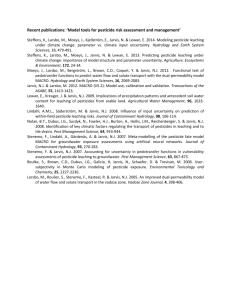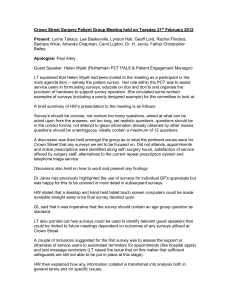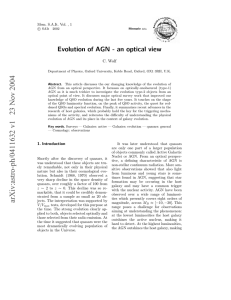Jarvis_EoR
advertisement
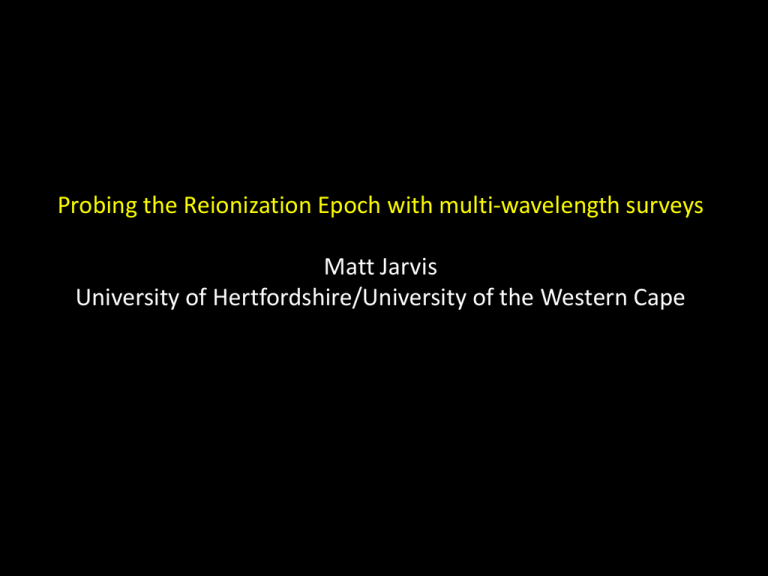
Probing the Reionization Epoch with multi-wavelength surveys Matt Jarvis University of Hertfordshire/University of the Western Cape Finding galaxies in the EoR with narrowband imaging We can focus on specific redshifts and try and detect emission lines. But only get narrow redshift slice, and doing many redshift slices is time consuming Smith & Jarvis 2007; Smith & Jarvis 2008a,b SuprimeCam VISTA Survey speed >3x faster than WFCAM and better sensitivity in the Z,Y,J wavebands Lyman-Alpha Survey in the Epoch of Reionization (LASER) M.Jarvis + Oxford, Edinburgh, LivJM Herts, Oxford, Edinburgh, LivJM Find the first large sample of galaxies within the epoch of reionisation (expect 50-200 in GT) Determine their luminosity function and clustering properties Also measure the properties of [OII] and H emitting galaxies at lower redshifts. Pointed observations of high-redshift clusters to measure the star-formation within dense environments Some candidates from ~30hours of VISTA NB imaging Preliminary results from LASER compared to Subaru results Preliminary results from LASER compared to Subaru results Deeper and wider observations proposed in SSA22, XMMLSS, COSMOS, ECDFS and Bootes (accessible to LOFAR) Preliminary results from LASER compared to Subaru results In the future HyperSuprime Cam will make bigger strides (1.5sq.deg FoV on 8m telescope) Other thoughts: near-IR version of HETDEX and NB filters on LSST AGN at high redshift For many decades the best way of probing the high-redshift Universe came from finding AGN, predominantly QSOs (from UVX selection) and radio sources from large radio surveys. van Breugel et al. (1999) Vanden Berk et al. 2001 Becker et al. 2002 QSOs in the EoR The detection of the Gunn-Peterson trough in the spectra of highredshift QSOs provided some of the best evidence that we were approaching the EoR observationally. However, it does not require much neutral hydrogen to full absorb the Ly-alpha photons. Thus, z~6.3 is probably marking the end of the EoR Becker et al. 2002 Near-IR selection with UKIDSS Venemans et al. 2008 How will current and future surveys do? Adapted from Willott et al. 2009 VIDEO+SERVs+DES++ Spitzer Representative Volume Survey (SERVS) approved to cover VIDEO survey regions + LH and Elais-N1 Elais-S1 XMM-LSS 1400 hours allocated – PI Mark Lacy Will provide 3.6 and 4.5um data to slightly deeper levels than the VIDEO depths (L* at z>5) VIDEO entering data sharing agreement with the Dark Energy Survey. DES will have grizy photometry over VIDEO regions to depths of AB~27 (5sigma) Concentrating on SNe science initially. Will be covered by Herschel-HerMES survey (100-500um) Partly covered by SCUBA2 CDF-S VIDEO+SERVs – towards the complete AGN luminosity function at z>6 L- and T-dwarfs z=6 z=6.5 z=7 Depending on the QSO LF slope expect 10-30 z>6.5 QSOs in VIDEO Z-Y vs Y-J very efficient at selection z>6.5 QSOs. VIDEO+SERVs crucially allows us to find the reddened high-z QSOs The EoR via the 21cm forest • • Using powerful radio sources within the EoR, the properties of the EoR can be studied in absorption, via the 21 cm forest. Surveys KSP will find these. Left: a simulated 1500-hr (1-beam) LOFAR observation of a 50mJy radio source at z=7.5. EoR absorption features are visible at f > 167MHz. Middle: the S/N obtained for sources of different S,z in a 1500-hr spectrum. Right: the predicted number of such sources in the LOFAR surveys. Issues with Spectral Index But steep spectrum sources fall out of flux-limited surveys more quicky than flatspectrum sources. Jarvis & Rawlings 2000 Means that if HzRGs have steep spectra then you need to observe them at low frequency Can turn around the way we use radio surveys Optical SDSS1-2 Pan-STARRS SDSS-3 DES 2010 2011 Now Now Near-IR UKIDSSVISTAJWSTELT Now Now 2013 2020 Mid/Far-IR Spitzer HerschelWISE ALMA Now 2012 Now Now Radio eMerlinLOFAR eVLAKAT/ASKAPSKA 2011 2011 2011 2020 Going back to the K-z relation… Jarvis et al. 2001; Willottet al. 2003 Going back to the K-z relation… Jarvis et al. 2001; Willottet al. 2003 Going back to the K-z relation… Jarvis et al. 2001; Willottet al. 2003 A demonstration of combining radio surveys with multi-wavelength data… A typical HzRG at z=4.88 Jarvis et al. 2009 Log(L(1.4))=26.5W/Hz/sr =0.75 Summary • The EoR is fundamental to our understanding of the Universe, how galaxies form and the impact of AGN activity in the early Universe • Optical searches cannot do this to z>6.5 • (Hyper)SuprimeCam and VISTA should help change this and enable us to determine the LF and clustering of galaxies at z> 7 • Further in the future Euclid, LSST and possible HIREX will take such studies to higher redshift and wider areas • Novel searches for AGN may also allow us to find highly the most massive dark matter haloes z>7 • However, proper understanding of the speed with which reionization takes place will come from combining these different probes of the EoR with data from the new radio telescopes
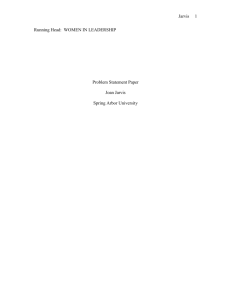
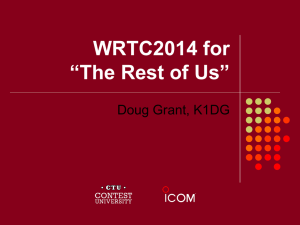
![Probing the epoch of reionization with tomographic [CII]](http://s2.studylib.net/store/data/005768347_1-7cace4bfe5576e1a87cbf90f5e08d4c8-300x300.png)
